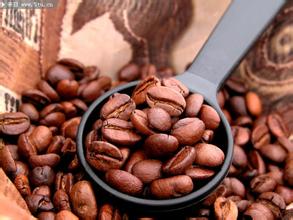Nicaraguan coffee is treated in those ways. Those varieties taste better.
After its establishment in 1961, Sang Jiefang led the guerrilla struggle. In 1979, the guerrillas were named Sandinista. In 1990, disarmament was announced and compulsory military service was abolished, and in February 1995, the Sandino people's Army was renamed the Nicaraguan National Army. The Nepalese Constitution stipulates that the army must obey the command of the civilian government, and the president is the supreme commander of the armed forces; the commander-in-chief of the army is elected from among the candidates nominated by the military commission and appointed by the president for a term of five years. Nicaragua is not allowed to serve as a member of the World Trade Organization (WTO) and has trade relations with more than 50 countries and regions. Signed free trade agreements with Mexico, other Central American countries, Dominica and the United States, and signed tariff preference agreements with Colombia, Venezuela, the European Union, Canada, Japan and so on. In 2012, Nepal's foreign trade totaled 11.417 billion US dollars, an increase of 12.1 percent over the same period last year. Coffee, meat, aquatic products, sugar, gold, silver, wood and bananas are mainly exported to the United States, El Salvador, Honduras and Costa Rica. Imported raw materials, semi-finished products, consumer goods, oil, fuel, lubricants, etc., the main source countries are the United States, Mexico, Costa Rica and Venezuelan Nicaraguans still maintain the custom of nature worship, all kinds of natural phenomena with mysterious meaning. Every volcano and lake in its territory has a legend. Momotongbo volcano, located on the north bank of Lake Managua, is famous for its "lighthouse of the Pacific Ocean" when viewed from afar. Local residents believe that the volcano is the embodiment of their chief Niagara, blessing the happiness and peace of their children and grandchildren. Its festival has a strong religious color because most of the residents believe in traditional Catholicism. For example, "Black Mass" is held in various cities in "Holy week"; "the Lord of Yeski Brass" is held in Tepitapa from January 12 to 16 every year; the ceremony of St. Mary is held from November 29 to December 7; the Day of Ascension of the Virgin Mary is celebrated on August 15, and so on.
Nicaraguan coffee has a wide range of flavor properties. Some coffee has a high alcohol thickness like Mexican coffee, while others have bright acidity like African coffee. Most of the varieties used in Nicaraguan coffee are traditional Tibica, and a few varieties of bourbon and Kaddura are grown.
Generally speaking, Nicaraguan coffee is characterized by calmness but without losing its flavor. Both Full city and Viennese are good choices when baking Nicaraguan coffee. Medium and deep roasting will bring mellow bitterness and excellent balance to Nicaraguan coffee.
Nicaragua Shangri-La Esperanza
Producing country: Nicaragua
Grade: SHG
Planting area: Sinotega
Brand name: Shangri-La Esperanza
Treatment method: wet treatment and solarization
Appearance: 0dplash 300grgrgrgr17-18SCR
Variety: Kaddura
Note: the dry aroma is full of chocolate, accompanied by hazelnut and cocoa aromas. The wet aroma also has the smell of chocolate, accompanied by the smell of orange peel. With the baking degree of city+, the bright lemon acid and long cocoa finish are wonderful.

Important Notice :
前街咖啡 FrontStreet Coffee has moved to new addredd:
FrontStreet Coffee Address: 315,Donghua East Road,GuangZhou
Tel:020 38364473
- Prev

Introduction to the characteristics of El Salvador Coffee Flavor Coffee Bean in producing area
El Salvador's domestic topography is mainly mountainous, plateau, volcanic, known as the country of volcanoes, Santa Ana active volcano 2385 meters above sea level, the highest peak in the country; the northern part of the country is the Lompa Valley and the southern part is the narrow coastal plain. Climatic characteristics all over El Salvador has a tropical climate, with an annual average temperature of 28 ℃; dry season from November to April and rainy season from May to October; coastal and lowland atmosphere
- Next

Introduction to the characteristics of Brazilian Coffee processing and Flavor Flavor Coffee Bean production area
Although coffee is diverse, Brazilian coffee is suitable for the taste of the public. For example, coffee produced in the northern coastal areas has a typical iodine taste, reminiscent of the sea after drinking. This coffee is exported to North America, the Middle East and Eastern Europe. Another kind of coffee that is interesting and worth looking for is washed Bahia. This kind of coffee is not easy to find, because after the United States
Related
- Detailed explanation of Jadeite planting Land in Panamanian Jadeite Manor introduction to the grading system of Jadeite competitive bidding, Red bid, Green bid and Rose Summer
- Story of Coffee planting in Brenka region of Costa Rica Stonehenge Manor anaerobic heavy honey treatment of flavor mouth
- What's on the barrel of Blue Mountain Coffee beans?
- Can American coffee also pull flowers? How to use hot American style to pull out a good-looking pattern?
- Can you make a cold extract with coffee beans? What is the right proportion for cold-extracted coffee formula?
- Indonesian PWN Gold Mandrine Coffee Origin Features Flavor How to Chong? Mandolin coffee is American.
- A brief introduction to the flavor characteristics of Brazilian yellow bourbon coffee beans
- What is the effect of different water quality on the flavor of cold-extracted coffee? What kind of water is best for brewing coffee?
- Why do you think of Rose Summer whenever you mention Panamanian coffee?
- Introduction to the characteristics of authentic blue mountain coffee bean producing areas? What is the CIB Coffee Authority in Jamaica?

